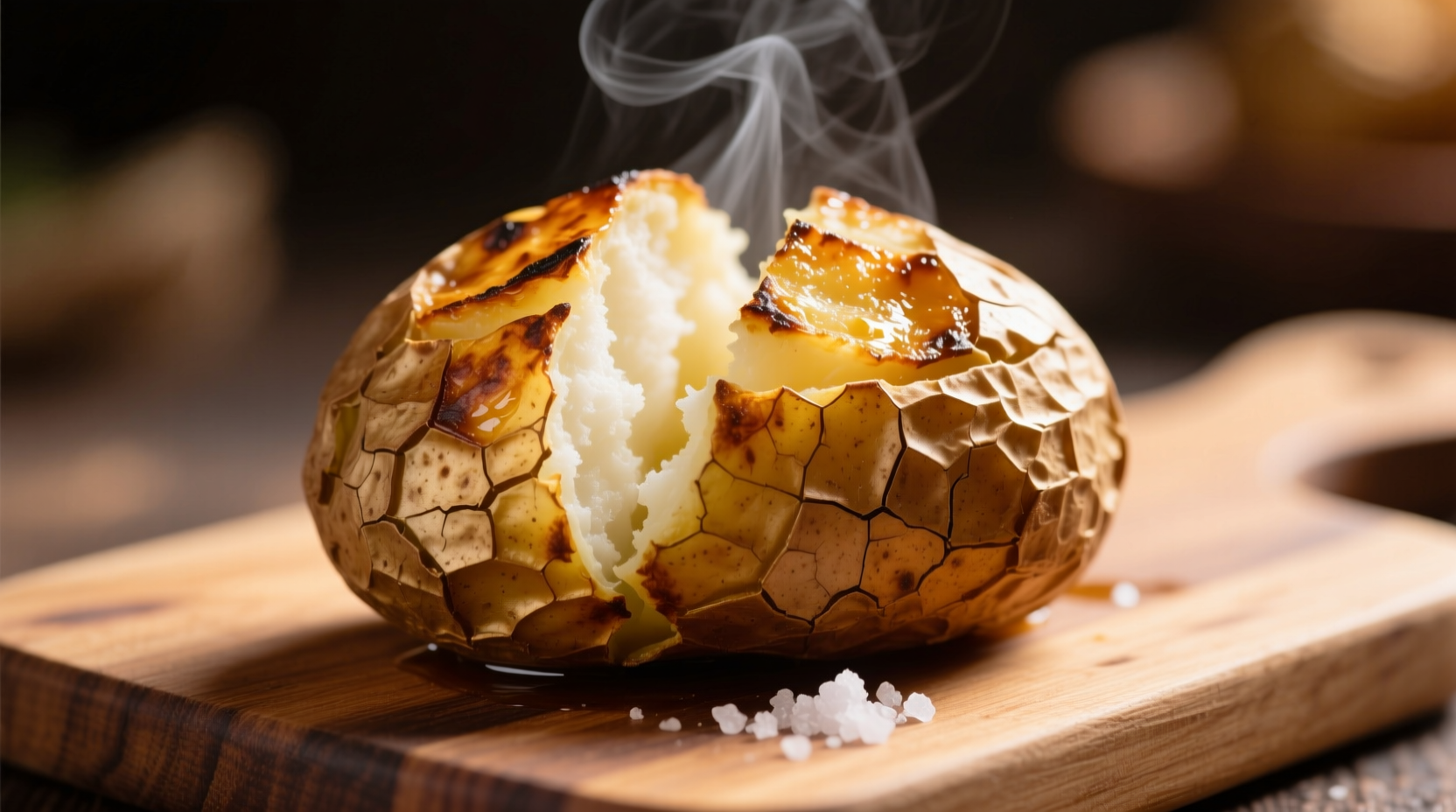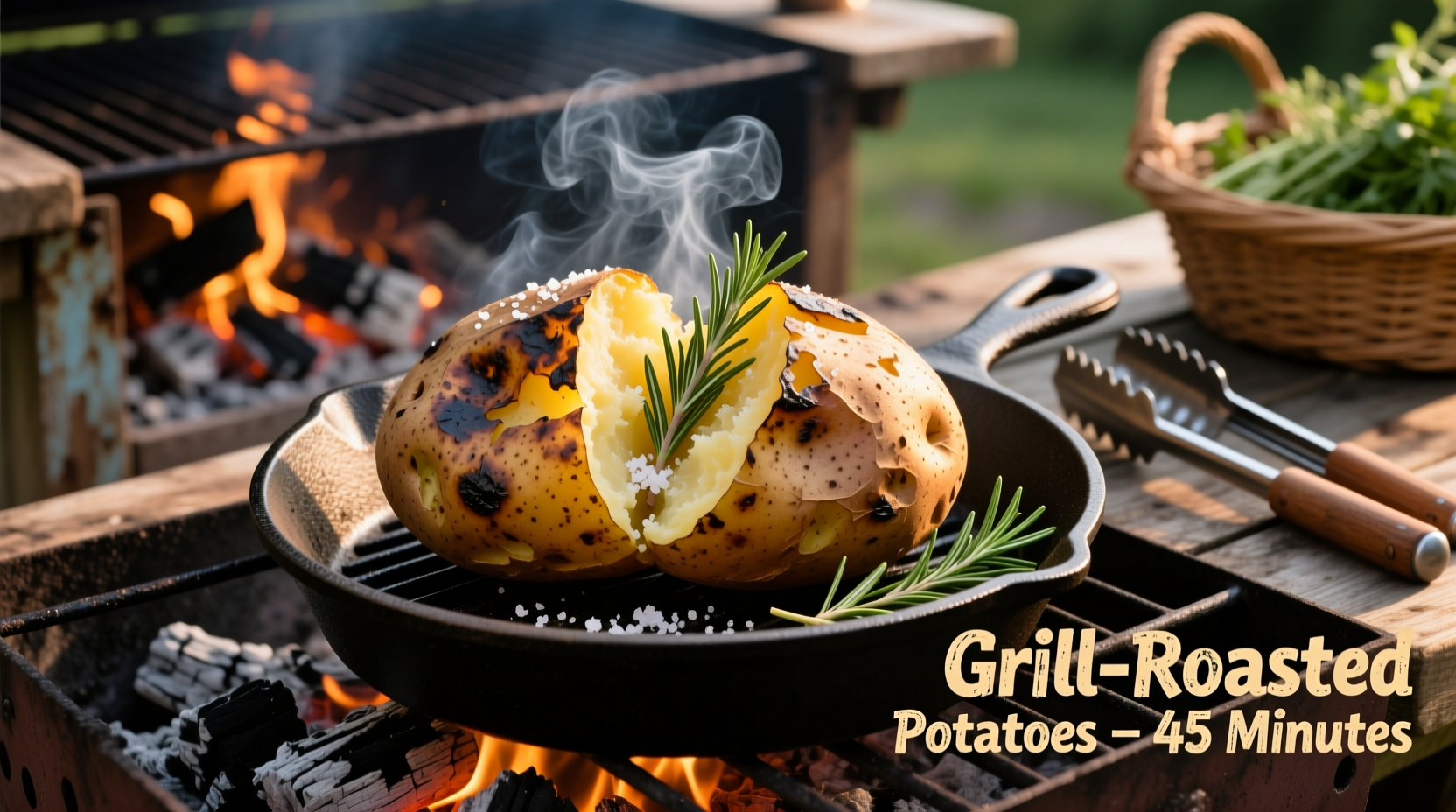Grilled baked potatoes deliver unbeatable crispy skin and fluffy interior with smoky depth you can't get from an oven. As a chef who's grilled hundreds of potatoes across professional kitchens and backyard setups, I've perfected a foolproof method that works on gas, charcoal, or pellet grills. Skip the foil for maximum flavor and texture, and learn exactly how long to cook potatoes on the grill based on size and heat—plus critical food safety tips you won't find elsewhere.
Why Grill Baked Potatoes Instead of Baking?
Grilling transforms ordinary potatoes through radiant heat and subtle smoke infusion. Unlike oven baking, the grill's dry heat creates a uniquely crisp skin while maintaining fluffy interior texture. Professional chefs prefer grilling for special occasions because it frees up oven space and adds complex flavor notes. Plus, you'll avoid heating up your kitchen during summer months.
Essential Equipment Checklist
Before starting, gather these items:
- Medium-heat grill (gas, charcoal, or pellet)
- Grill brush for grate preparation
- Instant-read thermometer (critical for food safety)
- Thin skewers or fork for testing doneness
- Clean kitchen towel for drying potatoes
- Oil with high smoke point (avocado or canola)
Potato Selection Guide
Russet potatoes work best for grilling due to their thick skins and high starch content. Look for uniform medium-sized potatoes (6-8 ounces each) for even cooking. Avoid:
- Green-tinged potatoes (indicates solanine)
- Those with deep bruises or sprouts
- Excessively large potatoes (over 10 ounces)
Smaller potatoes (under 5 ounces) cook too quickly and often burn before fully cooking through.
Preparation: The Critical First Steps
Proper prep prevents common grilling disasters:
- Scrub thoroughly with vegetable brush under cold water
- Dry completely with clean towel (moisture causes steaming)
- Pierce 6-8 times with fork (prevents bursting)
- Oil lightly with high-smoke-point oil (1 tsp per potato)
Never skip the drying step—wet potatoes steam instead of developing crispy skin. And contrary to popular belief, foil creates soggy skin by trapping moisture.
| Wrapping Method | Cooking Time | Skin Texture | Flavor Impact |
|---|---|---|---|
| No wrap (direct on grates) | 45-60 min | Crispy, slightly charred | Smoky, complex |
| Foil wrap | 50-70 min | Soggy, steamed | Muted, one-dimensional |
| Perforated foil | 45-65 min | Moderately crisp | Mildly smoky |
Grill Setup & Temperature Control
Set up for indirect cooking—the most crucial step many backyard grillers miss:
- Gas grills: Light only one side, keep potatoes on unlit side
- Charcoal: Bank coals to one side, cook potatoes on opposite side
- Maintain 375°-400°F throughout cooking
Direct heat burns the outside before the inside cooks. Use a reliable grill thermometer—don't guess temperatures. For gas grills, preheat with lid closed for 10 minutes before adding potatoes.

Step-by-Step Grilling Instructions
- Prepare grill for indirect medium heat (375°-400°F)
- Clean and oil grates thoroughly
- Place potatoes directly on cooler side grates
- Cook with lid closed, turning every 15 minutes
- Check internal temperature at 45 minutes (205°-210°F)
- Remove when fork-tender and reaches safe temperature
Turning frequency matters—too infrequent causes uneven cooking, too frequent exposes potatoes to flare-ups. The USDA Food Safety and Inspection Service confirms potatoes are safe at 205°F, though many home cooks undercook them to unsafe temperatures.
Doneness Testing: Beyond the Fork Test
While the fork test works, an instant-read thermometer provides food safety certainty. Potatoes reach safe eating temperature at 205°F. For optimal texture:
- 195°-200°F: Slightly firm center
- 205°-210°F: Perfectly fluffy throughout
- Over 215°F: Risk of dry, mealy texture
Undercooked potatoes pose food safety risks, while overcooked ones lose structural integrity. The National Center for Home Food Preservation recommends the 205°-210°F range for ideal texture and safety.
Serving Like a Pro
Let potatoes rest 5 minutes after removing from grill. Slice open and fluff interior with fork before adding toppings. For restaurant-quality presentation:
- Serve in aluminum foil boats for rustic presentation
- Offer compound butter instead of plain butter
- Provide small bowls of toppings for customization
Popular topping combinations include classic sour cream & chives, bacon & sharp cheddar, or Mediterranean olive oil & feta.
Troubleshooting Common Problems
Burned skin but raw center: Temperature too high—next time reduce heat to 350°F and increase cooking time. Soggy skin: Either didn't dry potatoes thoroughly or used foil. Skip foil and ensure complete drying. Uneven cooking: Didn't turn potatoes frequently enough. Set timer for 15-minute intervals. Splitting potatoes: Didn't pierce enough times. Always pierce 6-8 times with fork.
Advanced Techniques for Flavor Variations
Once you've mastered the basic method, try these professional variations:
- Herb-infused: Rub skins with rosemary-thyme oil blend before grilling
- Smoky depth: Add wood chips (hickory or apple) to charcoal for 20 minutes
- Crispy edge: Finish directly over high heat for 2-3 minutes per side
For gas grill users, the University of Minnesota Extension recommends adding wood chips in a smoker box for optimal smoke infusion without flare-ups.











 浙公网安备
33010002000092号
浙公网安备
33010002000092号 浙B2-20120091-4
浙B2-20120091-4